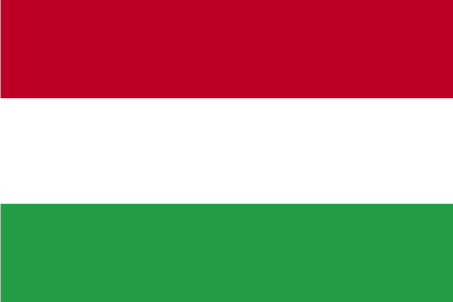What’s So Special About Hungarian?
By Sarah-Claire Jordan
 Hungarian is the official language of Hungary, a country in Central Europe surrounded by land on all sides. Its closest neighbors are Romania, Slovakia, Slovenia, Croatia, Serbia, Austria, and Ukraine. Hungarian itself is one of the official languages of the European Union, along with 23 others. Communities of Hungarian speakers can be found in all of the neighboring countries due to a Hungarian diaspora of sorts, as well as in other countries where Hungarian immigrants have settled.
Hungarian is the official language of Hungary, a country in Central Europe surrounded by land on all sides. Its closest neighbors are Romania, Slovakia, Slovenia, Croatia, Serbia, Austria, and Ukraine. Hungarian itself is one of the official languages of the European Union, along with 23 others. Communities of Hungarian speakers can be found in all of the neighboring countries due to a Hungarian diaspora of sorts, as well as in other countries where Hungarian immigrants have settled.
Hungarian is part of a unique language group in Europe
One thing that sets Hungarian apart from many other languages native to Europe is that it is not part of the Indo-European language family. Hungarian is classified as a member of the Uralic language family, which includes Estonian as well as Finnish. This is interesting mostly because the rest of the Uralic languages tend to be spoken more in Eurasia than Europe. Before the 1670s, it was actually believed that Hungarian was not connected to any other Uralic language, but after some connections were discovered it was immediately classified as such. Still, one hypothesis tries to prove similarities between Hungarian and Turkic languages, but as of yet there isn’t much evidence.
Hungarian has different levels of politeness
Many languages have different ways of addressing different members of society, but Hungarian has a system that focuses only on politeness rather than status so much. The highest form of politeness is used when addressing someone who you want to show respect to, though it is also used for official and formal documents as well as business. The next tier down is used to show some amount of distance between the one addressing and the one being addressed, like an employee addressing their boss or vice versa. After that is the way of addressing used by children when speaking to adults. This is also used when talking to the elderly and women. The most casual form of politeness can be used to address anyone, and is becoming the most common way to address people. It very well might cause the rest of the levels to become obsolete soon.
There are two different words for “red” in Hungarian
This is just one example of unique characteristics of Hungarian vocabulary, but it deserves to be looked at. While in English we say “red” and then have other words that specify exactly what tone or type of red we are talking about, Hungarian starts off with two different words for the same color. “Piros” is the word that children learn first, and generally is used to refer to things that are red but artificial or inanimate, like a barn or a red light. “Vörös”, on the other hand, is learned later and refers to red things that are natural or alive, like apples and blood, or something that is emotional. When used to describe something that doesn’t fit into these categories, it ends up being a matter of just picking one term over the other.
Category: Foreign Language








